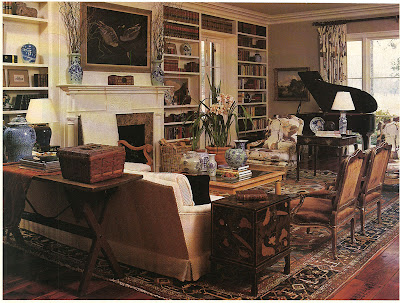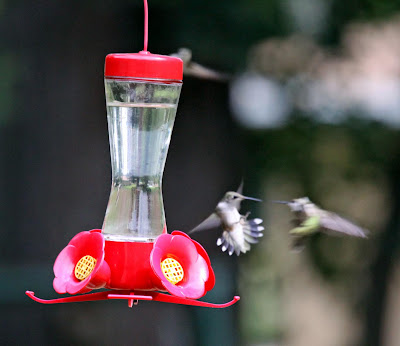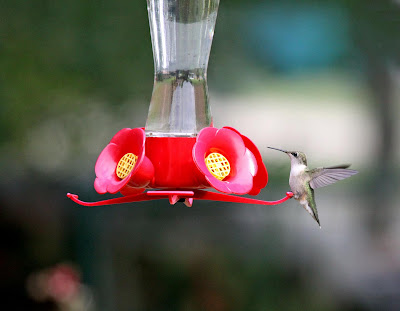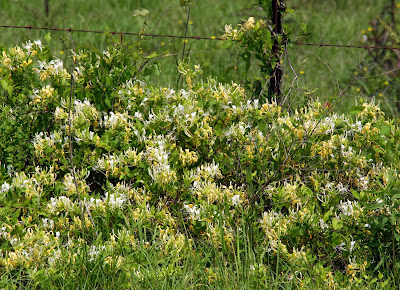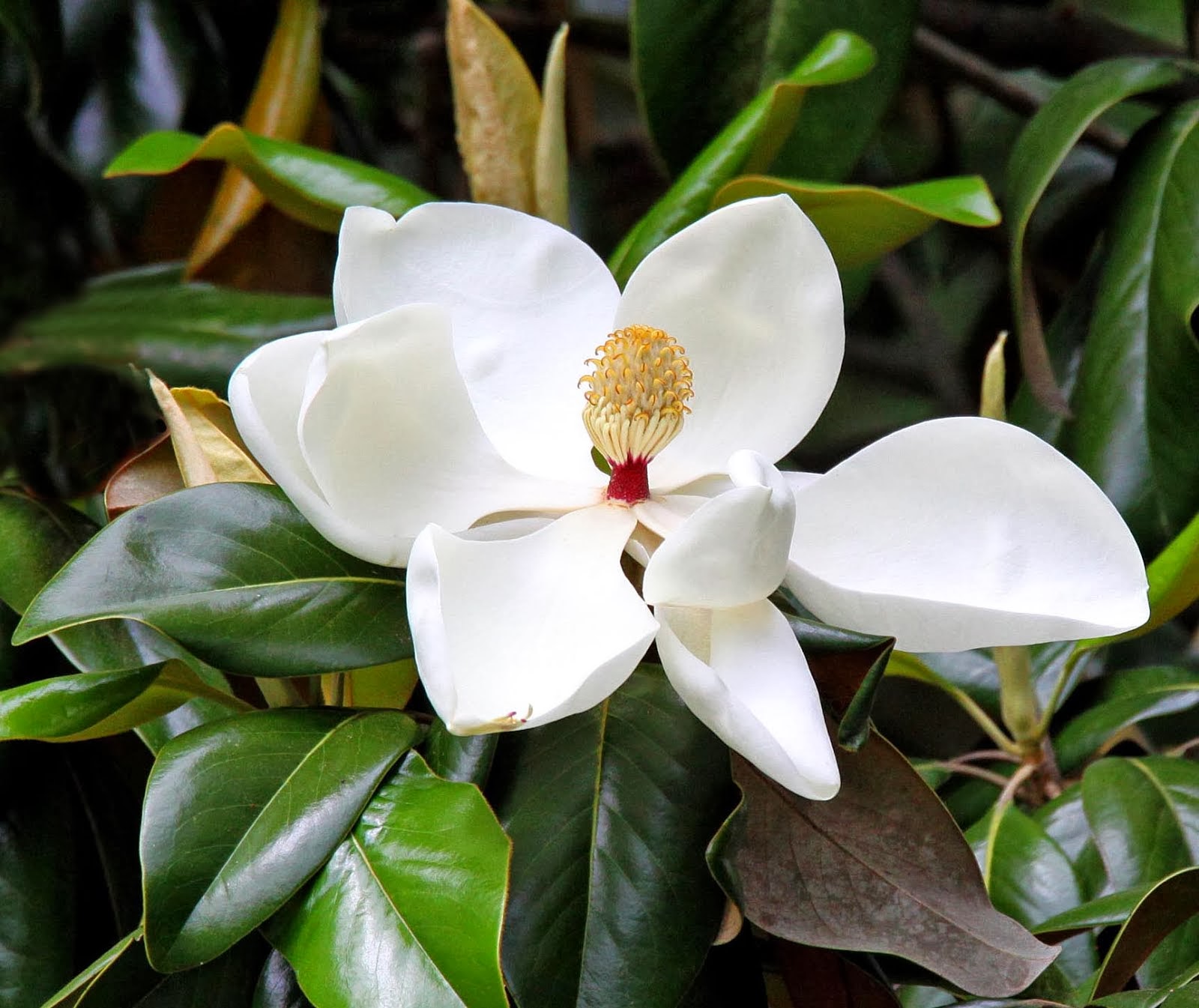One of my favorite fall plants here in Mississippi, is the Croton (Codiaeum variegatum). It is a perfect "filler" plant to replace my long-faded and bedraggled summer flowers until I can plant pansies and snapdragons in late fall. Its dazzling gold, orange, and red glossy variegated leaves are sure to add a blaze of color wherever you plant it. I recently planted these two Crotons in a flower bed in our courtyard, where even on rainy days (like today), their spectacular colors seem to add a touch of sunshine outside our windows. Crotons prefer bright light, and the sun really brings out the colors. They do well in the cooler fall temperatures here in Mississippi, but won't tolerate a freeze unless protected. If crotons are hardy where you live, I think you would enjoy their beautiful display of fall colors, at least until Thanksgiving. |
Friday, September 30, 2011
Crotons: A Blaze of Color for Fall
Thursday, September 29, 2011
The Perfect Room
I clipped this picture from the pages of Southern Living magazine probably twenty years ago, and recently came across it in my "House Files" notebook.
I scanned it into my computer so I could have it handy to study and use as inspiration. Every time I look at it, I see something different that I haven't noticed before, and I am amazed by how it still looks stylish and up to date, even after the passage of 20-something years.
I love the eclectic mix of styles -- from the elegantly formal grand piano, Queen Anne lamp table, Oriental chest, Chippendale (?) side chairs, and collection of blue and white porcelain pieces scattered around the room ... to the rustic pine "scissor-leg" sofa table, casual herringbone fabric on the sofa, and wicker and rattan accessories — all of which perfectly complement each other to create a beautifully warm and welcoming room that beckons you to come in and sit a spell.
I love the touches of black in the rug, and the piano, and the ginger jar lamp at the left end of the sofa — and the black background of the picture hanging over the mantel.
I love the simplicity of the twisted willow branches in the vases on the mantel ...
And the contrast between the elegant orchids (or lilies?) and the plain terra cotta planter on the coffee table.
I love the bookcases that actually have books in them, as well as the books stacked on the tables all over the room.
I love the neutral colors in the floral fabric of the draperies, and also on the two chairs in front of the piano.
And last, but certainly not least, I love the soft "taupe" color on the walls (also repeated in the rug and floral fabric), and the rich earth tones used throughout the space.
This beautiful room epitomizes what comes to my mind when I hear the words, elegant, timeless, classic, tasteful, warm, and inviting ...
I wish I still had the issue of Southern Living that featured this lovely room, so I could give credit to the homeowner or designer who created it. Perhaps I will get lucky and he or she will see this post and contact me.
Tuesday, September 27, 2011
Hummer Tales
up with the flowers, don't you!

Whew! That was a close one! Ouch — That's gotta hurt!
Ouch — That's gotta hurt!
Those red Crape Myrtles look pretty tasty.
I think I'll get a closer look ...
Love those tail feathers and the expression on its face!
Y'all wanna play "Ring around the Rosie?"


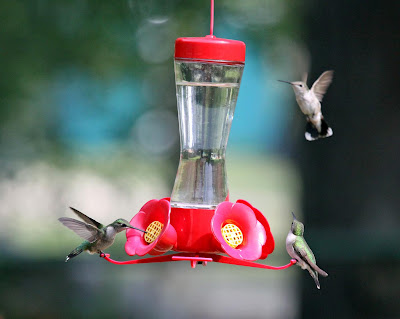
Monday, September 26, 2011
Mexican Petunias
We visited my parents over the weekend at their home in northeast Louisiana, and enjoyed sitting on their back porch watching the antics of their hummingbirds as they swarmed around two feeders. I'll share a few of the pictures I captured of the hummers later this week, but today I'd like to share these colorful Mexican Petunias (ruellia brittoniana), which are growing in a flower bed near their porch.
Mexican Petunia is a perennial shrub that grows to be about three feet high and three feet wide.
When grown under hot sunny conditions, the foliage assumes a metallic bluish cast.
The flowers are trumpet-shaped, and between one-and-a-half and two inches in diameter.
They can be white, pink, purple, or any shade of blue, but I've never seen any color but the bluish-purple. The flowers bloom profusely during the hottest part of the year, and butterflies love them.
This is a picture of my Mexican Petunias which I took a couple of years ago. If you look closely, you can see butterflies in and amongst the blooms.
The plant is native to Mexico, but it can be found throughout the southeastern United States. Unfortunately, in some places, like Florida, it has been declared invasive.
Invasive or not, I love Mexican Petunias — but, then, I love Morning Glories ...
Honeysuckle ...
Kudzu ...
And Clover, too!
Friday, September 23, 2011
Farewell to Summer
To every thing there is a season ... and the season of Fall is upon us. Even though most of us have endured an unusually hot and dry summer this year, it's kind of sad to see it go.
As a way of bidding farewell to summer, I've created a slideshow of photos from my "Summer Flowers" collection and added the Theme from a Summer Place as background.
I hope you enjoy the slideshow as you reflect on your summer and look forward to the arrival of Fall.
 |
Wednesday, September 21, 2011
The Olive Tree
I saw my first Olive Tree recently, and it wasn't in Greece, or Italy, or Israel, or California ... or anywhere else you would expect to see olive trees. It is growing in a lovely little garden right here in Vicksburg, Mississippi.
And what a glorious tree it is! It stands over 20 feet tall, and its silvery-green branches are loaded with olives.
There was a recent article about the tree in the Vicksburg Post, and I found the story fascinating — so fascinating, in fact, that I called the owner of the tree, Mrs. Mary Qasim (rhymes with possum), and asked if I could come see the tree and feature it on my blog. Mary graciously allowed me to photograph their tree, and it was truly a pleasure meeting her. She even gave me a tour of her beautiful garden, pointing out some of the more unusual plants along the way.
But before I share the tour and pictures of the garden, I'd like to share the story about how the olive tree came to be a part of Mary's and her husband Mohammad's garden.
According to Mary and the article in the Post (which was written by Vicksburg Master Gardener Miriam Jabour), Mohammad grew up Palestinian in Jerusalem, and has fond memories of, and often speaks of, the olive groves and other fruit trees, and how the various fruits were processed. His family made their own olive oil and shared it with others who needed it.
When the Qasims moved to North Carolina, they tried to grow an olive tree, but the winters there were too cold for the subtropical evergreen to live, and it died the first year.
But Mary and Mohammad didn't give up. Nine years ago, they planted another olive tree ... this time inside a walled garden on the side of their home in Vicksburg. Surrounded on three sides by high walls, the Qasim garden is protected from the effects of winter winds that often damage cold-sensitive plants, which is probably why they have had such success with their tree.
“We were told you couldn’t grow them here, but we chose the toughest cultivar,” Mary explained. Their tree is a Frantoio, one of the primary varieties the Italians use in the production of Tuscan olive oil. It is self-fertile, meaning it does not need another variety to set fruit.
Mary told me that when they planted the tree, a dove flew down into the garden and watched as they planted it. I'm not sure if that was a good omen or just a fluke, but the little olive tree lived and flourished, and now stands over 20 feet tall, its branches heavy with ripe olives ready for harvest.
Mary said, "We consider our tree a gift and we love that tree."
After hearing its story and seeing it for myself, I can certainly understand why. The tree was the focal point of the garden, and I couldn't wait to capture with my camera its silvery leaves, and graceful branches loaded with purple and green olives.
I was surprised to learn that the fruit is green until it ripens, and then it turns a dark purplish-brown before dropping from the tree.
Mary said the olives cannot be eaten fresh because they contain a very bitter substance called glucoside. They must be cured or pressed into olive oil before they can be consumed. The Qasims will be harvesting olives for several weeks, then curing them in a brining liquid for their own table use.
As we walked through the garden, I quickly discovered that the olive tree wasn't the only unusual plant growing within those walls. The Qasims also grow a variety of fruits, including two kinds of apples, pomegranates, figs, blueberries, loquats, muscadines, and lemons.
Their Meyer's Lemon Tree was loaded with fat green lemons, which Mary said will be ripe in a couple of weeks.
Banana Trees ...

A Bay Tree (Laurel Bay, Lauris nobilis), whose leaves the Qasims use for cooking ...


And Lebanese Mint ...
Besides the Olive Tree, one of the most interesting plants (to me) in the Qasims' garden was this Milkweed plant.
I had never seen a Milkweed plant, and was immediately drawn to the brightly colored flower.
Then Mary asked me if I had ever seen a Monarch butterfly's egg (which I hadn't), and I was totally captivated by what she showed me next.
She searched the undersides of the leaves and it didn't take her long to find what she was looking for — a Monarch Butterfly Egg! Mary held the leaf up so I could get a closeup shot of the tiny egg ...
Mary went on to tell me that Milkweed contains a substance which is toxic to birds and other predators, and acts as a "host plant" for the Monarch butterfly. As the monarch larva consumes the milkweed leaves, it also retains the toxic substance (cardiac glycosides), making the Monarch toxic to predators, too. Is that not amazing! Nature never ceases to awe and humble me.
As we continued our walk down the winding path that led through the garden, I noticed that the raised beds not only held all kinds of interesting trees and plants, but little garden "creatures" as well. Every gardener knows that no garden is complete without a gnome, and this little guy looked quite comfortable perched on the ledge near the tomato patch ...
This is "Nerdy Bird," who was made by a local policeman in his spare time.
A local landscaper built the arbor for the muscadine vine, and also designed the unique arbor for the patio area ...
I love the shell "chandelier" and wind chimes ...
Mary said this is "Edgar the cat," and I was relieved to know that I'm not the only one who names their "yard critters."
Here are a couple more pictures I captured as we headed back to the front of the garden ...
Although I set out to see and photograph Mary's olive tree, I was blessed even more by the pleasure of meeting Mary, and seeing her and Mohammad's beautiful little garden through her eyes. Everywhere I looked, I could see the love that went into planting each and every tree and flower ... and, especially, the Olive Tree.
Throughout history, the Olive Tree has been a symbol of Peace ... and I will always remember the peacefulness of that little garden just a few blocks away from the hustle and bustle of downtown Vicksburg. Thank you for sharing it with me, Mary.









